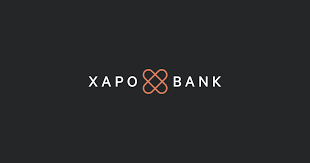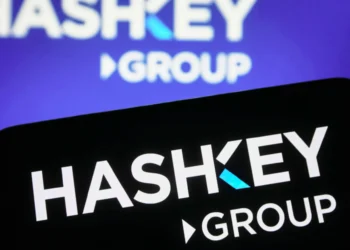The United Kingdom neobank Xapo Bank recently added a new financial product to its lineup: Interest-Bearing Bitcoin Accounts (IBBAs). These accounts offer up to 1% annual interest rate on Bitcoin holdings without requiring users to stake, lend, or lock up their funds. This is a very compelling alternative for those seeking better returns while maintaining access to their investments.
However, given the precedents set by similar products in the past, Xapo’s IBBAs beg the question of how feasible and sustainable they will be in the long term. In this article, we explore the features of Xapo’s IBBAs, compare them to traditional fiat accounts, examine past attempts at similar services, and assess the potential challenges and opportunities that lie ahead.
How Xapo’s Interest-Bearing Bitcoin Accounts Work
Notably, these Interest-Bearing Bitcoin accounts are the newest addition to Xapo’s broader suite of digital asset-focused banking services, which includes a Bitcoin debit card and stablecoin payment rails with USD accounts.
To earn interest with Xapo’s newest product, users must maintain a minimum balance of $20 worth of bitcoins. The US dollar account and Bitcoin wallet will accrue interest when the balance exceeds this threshold. The interest is paid out daily based on your holdings, with the interest rate adjusting if you deposit or withdraw funds.
You can choose to maintain your holdings in USD or Bitcoin; however, the interest is paid in BTC and added to your Bitcoin balance. You can also opt out of earning the interest at any time.
While Xapo has not explicitly detailed how it generates funds to pay out as interest on these accounts, it’s speculated that the bank may leverage yield generation strategies offered by DeFi protocols or lend Bitcoin to institutional borrowers. This lack of transparency regarding the source of interest payments is a point of concern that warrants further scrutiny.
Can Xapo’s Bitcoin Accounts Compete with Fiat Accounts?
Xapo’s Interest-Bearing Bitcoin Accounts (IBBAs) are indirectly positioned to compete with traditional fiat accounts that offer similar benefits.
Bitcoin is often seen as a hedge against inflation due to its limited supply and independence from traditional financial systems. Unlike fiat currencies, which can lose value over time through inflation, Bitcoin has the potential to preserve and even increase purchasing power. While Xapo Bitcoin Accounts may not offer drastically higher interest rates than traditional savings accounts, typically ranging from 0.01% to 0.50%, the possibility of Bitcoin appreciating in value provides extra protection against inflation, which fiat accounts lack.
However, this potential for higher returns comes with the challenge of Bitcoin’s volatility. Bitcoin’s value can fluctuate significantly, introducing more risk compared to the stability of fiat currencies. Xapo’s Bitcoin Accounts offer the chance of greater returns, while traditional savings accounts are more predictable, offering lower but steadier earnings.
When it comes to accessibility, Xapo allows users to access their funds at any time, similar to traditional savings accounts. Some traditional accounts, however, may restrict the number of monthly withdrawals. Xapo not only matches this flexibility but also enhances it with the global reach and 24/7 availability of cryptocurrencies, making it a convenient option for those who need constant access to their money.
Security is another key consideration. Xapo implements strong measures to safeguard Bitcoin, but unlike traditional savings accounts, it doesn’t include government insurance like FDIC coverage in the US, which protects deposits up to $250,000. For those who prioritize the security of government-backed insurance, this could be a crucial difference when deciding where to store their savings.
The Precedents Are Not Good
The crypto industry has seen similar attempts at offering interest-bearing cryptocurrency accounts, with mixed results. Two notable examples are BlockFi and Celsius Network, both of which faced significant challenges.
The now-bankrupt BlockFi offered a similar service in 2019. Its BlockFi Interest Account (BIA) offers interest rates based on the amount of digital assets deposited:
- Up to 0.25 BTC: 4% interest
- 0.25 to 5 BTC: 1.5% interest
- Over 5 BTC: 0.25% interest

However, BlockFi collapsed due to various regulatory and legal issues. Several states issued cease-and-desist orders against the platform. The U.S. Securities and Exchange Commission (SEC) fined BlockFi $100 million, claiming its interest account products were unregistered securities. This regulatory scrutiny hurt BlockFi’s reputation and made it hard to attract new investors, leading to its downfall.
Celsius Network, established in 2017, provides interest on cryptocurrencies and offers slightly higher rates for users who choose to receive interest in its native token, CEL.
:format(webp)/cloudfront-us-east-1.images.arcpublishing.com/coindesk/XLXHC2FCSRA35KWN3LLHRQEDNY.jpg)
Users with 1 BTC or less earn 6.20% interest, while those with more than 1 BTC earn 3.51%. However, Celsius Network’s collapse happened due to several critical mistakes and market conditions. The platform failed to protect its liquidity during the volatile cryptocurrency market of 2022, especially when Terra Luna’s stablecoin, UST, collapsed, leading to massive losses. As a result, many investors withdrew their funds to avoid potential devaluation, worsening Celsius’ problems. Additionally, the platform faced legal issues stemming from investigations from U.S. regulators, including the SEC, CFTC, and FTC. The arrest of CEO Alexander Mashinsky for fraud and market manipulation further destabilized the company.
Is Xapo’s Strategy Feasible in the Long Term?
Xapo’s Interest-Bearing Bitcoin Accounts concept is innovative and aligns with the growing interest in digital assets, but the path ahead isn’t without hurdles. The collapses of BlockFi and Celsius Network serve as stark reminders of the regulatory and market risks inherent in offering such products. It is important to point out these examples operated in unique circumstances in which Xapo might never encounter.
Xapo operates in the UK, where there are fairly well-defined stances on cryptocurrencies. However, these examples offer insights into the unpredictable and difficult waters the bank is trying to navigate. Xapo’s leaders seem to know this.
Xapo’s leadership has expressed confidence in the UK’s regulatory framework, suggesting that the bank is poised to make a significant impact on the future of digital finance. Joey Garcia, Xapo Bank’s Director and Head of Regulatory and Public Affairs, reportedly praised the UK’s progressive regulatory environment and vibrant financial market. He believes that Xapo’s new accounts will significantly impact the future of digital finance in the UK. Seamus Rocca, the bank’s CEO, even claimed that meeting the UK’s stringent regulatory standards is a notable achievement.
Only time will tell if Xapo’s IBBA model can withstand the pressures that have brought down others in the past. Though the path might be tough, Xapo’s success will largely depend on its ability to navigate the complex regulatory landscape, manage market volatility, maintain transparency, and continuously innovate.
While it’s too early to predict the long-term success, the bank’s forward-thinking approach and the team’s confidence in their regulatory compliance provide a hopeful outlook
Disclaimer: This article is intended solely for informational purposes and should not be considered trading or investment advice. Nothing herein should be construed as financial, legal, or tax advice. Trading or investing in cryptocurrencies carries a considerable risk of financial loss. Always conduct due diligence.
If you would like to read more market analyses like this, visit DeFi Planet and follow us on Twitter, LinkedIn, Facebook, Instagram, and CoinMarketCap Community.
“Take control of your crypto portfolio with MARKETS PRO, DeFi Planet’s suite of analytics tools.”




















